- Clermont: The Livingstons’ Lost Powder Mill
- Executed Today in 1868: Joseph Brown, of Hudson
- Genealogy: Free Guide to New York Ancestors
- Slate: Alternate Reality of Civil War Re-Enactors
- History: The Inevitable Climate Catastrophe
- Academic Blogging: Pleasure And Credit
- Fire Island Pines: The Architecture of Seduction
- Salon: A Modern History of Swearing
- Should Technology Deface Tombstones? A Better Idea
- Misplaced Honor: US Military Bases Named for Traitors, And Worse
A Missing Element Of Upstate History Tourism
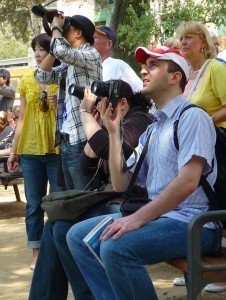 Now that Memorial Day has passed and the summer tourism season is officially underway, it should be no surprise that the New York Times is full of articles about tourism. One article features Greece and the lure of the classical world for tourists. Greece has been experiencing a rocky road as of late but tourists are returning now that the situation appears to have stabilized.
Now that Memorial Day has passed and the summer tourism season is officially underway, it should be no surprise that the New York Times is full of articles about tourism. One article features Greece and the lure of the classical world for tourists. Greece has been experiencing a rocky road as of late but tourists are returning now that the situation appears to have stabilized.
Greece needs a shot in the arm from tourists given the plunge in the economy, so it would seem that the classically-named cities of upstate New York and the actual homeland of those cities have something in common. Read more
Landmarks of New York Photography Exhibit Opening
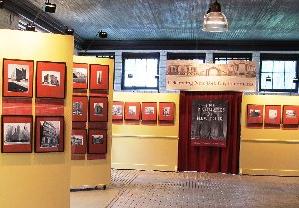 The Jay Heritage Center kicks off NY Heritage Weekend and the Path Through History Weekend with the opening of their first major photography exhibit, The Landmarks of New York, on Sunday June 2nd at 3pm.
The Jay Heritage Center kicks off NY Heritage Weekend and the Path Through History Weekend with the opening of their first major photography exhibit, The Landmarks of New York, on Sunday June 2nd at 3pm.
The show fills their newly configured gallery space at the 1907 Carriage House and includes a collection of 90 black and white photos documenting a select cross-section of New York City’s best loved architectural treasures. Read more
New Exhibit on 18th Century Medicine at Fort Ticonderoga
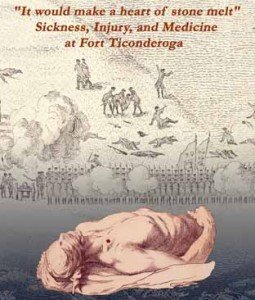 Fort Ticonderoga’s newest exhibit, “It would make a heart of stone melt”: Sickness, Injury, and Medicine at Fort Ticonderoga, is now open. The exhibit explores early medical theory, practice, and experience as each relates to the armies that served at Fort Ticonderoga in the 18th century.
Fort Ticonderoga’s newest exhibit, “It would make a heart of stone melt”: Sickness, Injury, and Medicine at Fort Ticonderoga, is now open. The exhibit explores early medical theory, practice, and experience as each relates to the armies that served at Fort Ticonderoga in the 18th century.
Organized into several sections, the exhibit presents an overview of medical practices, diseases of the army, and the treatment of wounds for the armies that fought in America during the French and Indian War and American Revolution. Read more
Westchester Co. African-American Hills Community Hike
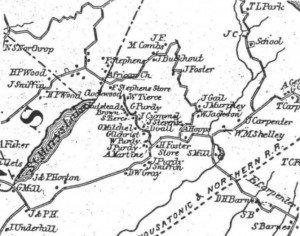 On June 2, a unique history-hike will take participants into the “Hills” community, the largest, African-American community in Westchester County in 1860.
On June 2, a unique history-hike will take participants into the “Hills” community, the largest, African-American community in Westchester County in 1860.
The land on which the Hills community farmed and lived is now part of Silver Lake Preserve, still very rugged territory, and will be the destination of a guided historic hike.
Naturalist Zaac Chaves will lead the hike and discuss changes to the environment and evidence of the “Hills” community on the land, while Edythe Ann Quinn, Ph.D., Professor of History at Hartwick College will provide history of the African-American community, focusing on the 1860s. Read more
Erie Canalway Heritage Excellence Recognized
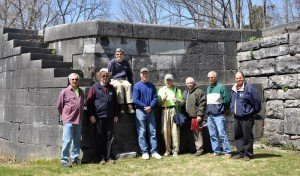 The Erie Canalway National Heritage Corridor Commission has announced the recipient of the 2013 Erie Canalway Heritage Award of Excellence: Enlarged Erie Lock 60 and Gallup’s Change Bridge #39 in Macedon, Monroe County. Honorable Mentions were awarded to Bushnell’s Basin Boat Dock and Canal Amenity Center in the Town of Perinton and the Trail of Hope in Lyons.
The Erie Canalway National Heritage Corridor Commission has announced the recipient of the 2013 Erie Canalway Heritage Award of Excellence: Enlarged Erie Lock 60 and Gallup’s Change Bridge #39 in Macedon, Monroe County. Honorable Mentions were awarded to Bushnell’s Basin Boat Dock and Canal Amenity Center in the Town of Perinton and the Trail of Hope in Lyons.
The Heritage Award honors significant places of the Erie Canalway National Heritage Corridor and recognizes excellence in advancing the goals of the Erie Canalway Preservation and Management Plan. A five-person independent jury selected award recipients based on a written application and site visit, which included meetings with officials at each site, as well as community leaders, municipal representatives, and other stakeholders. Read more
Mount Lebanon Herb Festival at Historic Shaker Village
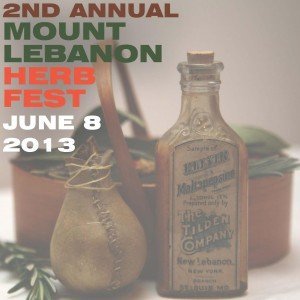 The Mount Lebanon Herb Festival will be held on Saturday, June 8, 2013, from 9 a.m. to 5 p.m, rain or shine on the campus of the Darrow School in New Lebanon, NY, the historic grounds of Mount Lebanon Shaker Village.
The Mount Lebanon Herb Festival will be held on Saturday, June 8, 2013, from 9 a.m. to 5 p.m, rain or shine on the campus of the Darrow School in New Lebanon, NY, the historic grounds of Mount Lebanon Shaker Village.
New Lebanon has a remarkable history with herbs. Its famous warm spring feeds the Shaker Swamp in the village of New Lebanon, and that supported an extraordinary collection of wild herbs long used by Native Americans. The Shakers, who based their national headquarters in New Lebanon, expanded on the uses of these herbs and created an industry around their sales. In 1824, Elam Tilden (father of politician Samuel J. Tilden) put this knowledge toward the start of one of the nation’s first pharmaceutical companies, the Tilden Company, using herbal tinctures, extracts and compounds derived in New Lebanon that were eventually marketed around the world. Read more
Hanford Mills Museum Events Feature History at Work
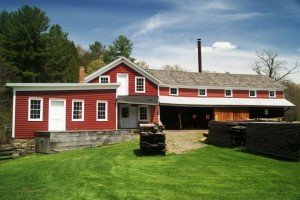 Hanford Mills Museum will offer two themed-weekends as part of the statewide Path Through History initiative, which seeks to connect people with New York’s rich cultural heritage. Hanford Mills operates a historic sawmill, gristmill and woodworking factory that grew in many stages between 1846 and 1902.
Hanford Mills Museum will offer two themed-weekends as part of the statewide Path Through History initiative, which seeks to connect people with New York’s rich cultural heritage. Hanford Mills operates a historic sawmill, gristmill and woodworking factory that grew in many stages between 1846 and 1902.
On June 1-2, Hanford Mills Museum will hold a History at Work Weekend, giving visitors a firsthand view of the work it took to run a mill. A century ago, mills were a mainstay of rural communities. They provided lumber for homes and farms, animal feed, and other needed supplies. On June 8-9, in addition to the 1926 Fitz Overshot Waterwheel and a water turbine, the Museum will be running its steam boiler and steam engine as well as its gas-powered dynamo, which provided the village of East Meredith with its first electricity. Read more
Conference on New York State History Taking Place June 6-8
 Local historians and educators from across the state will gather in Cooperstown for the 2013 Conference on New York State History taking place June 6-8 at the Fenimore Art Museum and The Farmers’ Museum. The conference highlights the latest research on New York History and culture. The conference is open to the public.
Local historians and educators from across the state will gather in Cooperstown for the 2013 Conference on New York State History taking place June 6-8 at the Fenimore Art Museum and The Farmers’ Museum. The conference highlights the latest research on New York History and culture. The conference is open to the public.
Several features of this year’s conference are of interest the general public: The keynote address is by Walter Stahr, author of Seward: Lincoln’s Indispensable Man, the evening of Friday, June 7 at 7:30 p.m. in the Fenimore Art Museum auditorium. On Saturday, June 8, the annual Wendall Tripp Lecture offers “Another Leatherstocking Tale: Susan Fenimore Cooper, the Episcopal Church, and the Oneida Indians,” delivered by Laurence Hauptman of SUNY New Paltz. This lecture takes place at 12:30 p.m. in the Louis C. Jones Center of The Farmers’ Museum. Read more
19th Century Celebrity Phat Boy Babbage
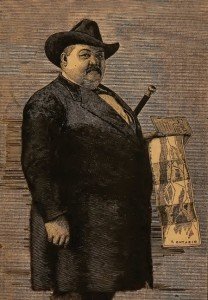 This is a story about a fat guy. In this politically correct and hyper-sensitive world, some of you might already be reaching for your keyboards to send me a nasty message for being so thoughtless. But without referring to him as fat, I couldn’t have written this piece. I’m pretty sure he knew he was obese, as did anyone who met him. But if there was ever any doubt, one could always refer to his professional name: Phat Boy. (Imagine … a name like that, 150 years before the birth of Rap music.)
This is a story about a fat guy. In this politically correct and hyper-sensitive world, some of you might already be reaching for your keyboards to send me a nasty message for being so thoughtless. But without referring to him as fat, I couldn’t have written this piece. I’m pretty sure he knew he was obese, as did anyone who met him. But if there was ever any doubt, one could always refer to his professional name: Phat Boy. (Imagine … a name like that, 150 years before the birth of Rap music.)
His given name was Edward Frederick Babbage, the son of John and Frances Babbage, who emigrated from England in the early 1800s and settled in Rochester, New York. Among their five children was a pair of twins, Edward Frederick and Edwin Francis, born about 20 miles west of the city in 1841. Early on, Edward exhibited a propensity for gaining weight. He was considered large at age six, and weighed 200 pounds when he was fourteen. Read more